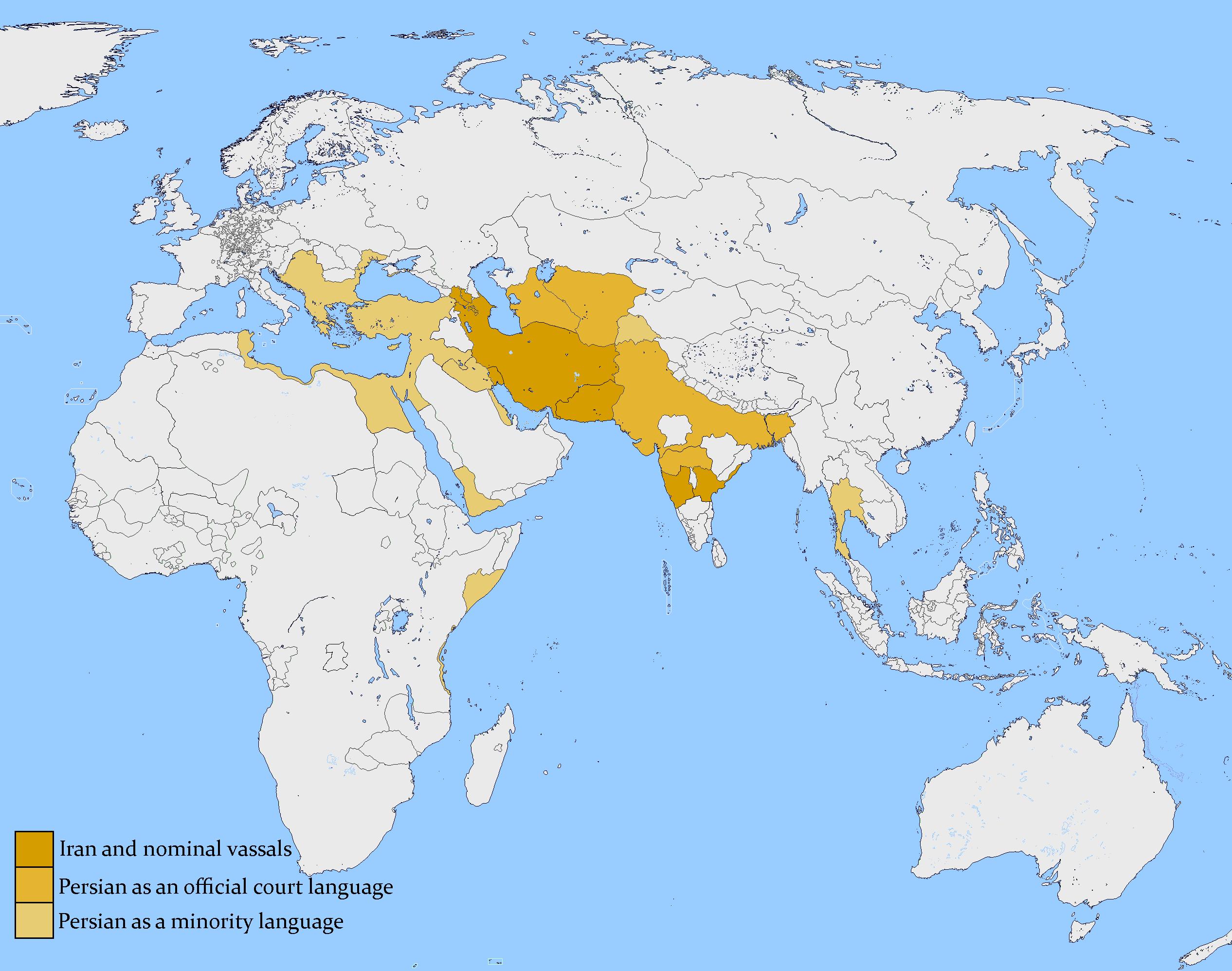Persian Language Distribution Map in the 17th Century


David Chen
Data Visualization Specialist
David Chen is an expert in transforming complex geographic datasets into compelling visual narratives. He combines his background in computer science ...
Geographic Analysis
What This Map Shows
The map titled "The Persian Language in the 17th Century" visually represents the geographic distribution and prevalence of the Persian language during this pivotal time in history. Spanning vast regions, the map highlights areas where Persian was not just spoken, but thrived as a cultural and literary language. The map likely indicates various dialects, regions of influence, and the sociopolitical landscapes that facilitated the spread of Persian, particularly under the Safavid Empire, which was a major proponent of the language during this era.
Deep Dive into the Persian Language
The Persian language, also known as Farsi, has a rich history that dates back thousands of years. By the 17th century, it had evolved significantly, influenced by various cultures and languages due to Persia's strategic location along trade routes. Interestingly, Persian became the language of the elite and was used extensively in poetry, philosophy, and administration, particularly in the courts of kings. The Safavid dynasty, which ruled from 1501 to 1736, played a crucial role in promoting Persian culture and language, establishing it as a symbol of national identity.
During this period, Persian literature flourished, and poets such as Saadi and Hafez became household names. Persian not only served as a means of communication but also as a vehicle for artistic expression. This transformation was largely supported by the development of educational institutions that emphasized Persian literature and philosophy.
What’s fascinating is that Persian was not confined to Iran. It spread across Central Asia, parts of the Indian subcontinent, and even into Ottoman territories. Its influence can be seen in the languages of these regions, with many adopting Persian vocabulary and literary styles. For instance, in India, Persian became the court language under the Mughal Empire, and its impact is still evident in modern Urdu.
Many people today are unaware that the Persian language has contributed to the development of numerous dialects and languages in the regions it touched. For example, Dari and Tajik are dialects of Persian spoken in Afghanistan and Tajikistan, respectively. Furthermore, Persian speakers in these areas often have rich, culturally specific expressions and idioms that have evolved over centuries, showcasing the language's adaptability and influence.
Regional Analysis
Examining the regions displayed on the map, we can see distinct clusters where Persian was prevalent. In Iran, Persian was the dominant language, serving as a unifying factor for the various ethnic groups within the country. However, the language's reach extended far beyond its borders. In Central Asia, particularly in modern-day Uzbekistan and Tajikistan, Persian was widely spoken and served as a cultural bridge between different communities.
In the Indian subcontinent, the Mughal Empire significantly influenced the spread of Persian. The map reflects this by showing areas of high Persian usage, especially in northern India. Cities like Delhi and Lahore became cultural melting pots, with Persian being the language of administration and high culture. Interestingly, the integration of Persian into Urdu during this time illustrates the dynamic interplay between languages and cultures.
In contrast, the Ottoman Empire, which had its own rich linguistic heritage, displayed a more complex relationship with Persian. While Persian was respected and often used in poetry and literature, Turkish remained the primary language of governance. This resulted in a fascinating blend of linguistic influences that can still be observed in modern Turkish and Persian literature.
Significance and Impact
Understanding the distribution of the Persian language in the 17th century is crucial for several reasons. First, it highlights the cultural exchanges that occurred during this period, which were pivotal in shaping the modern identities of various nations in the region. The widespread use of Persian in literature and administration helped to foster a shared cultural heritage across diverse populations.
Moreover, the legacy of Persian as a literary language has lasting implications today. Countries like Iran, Afghanistan, and Tajikistan still celebrate Persian literature, and the language continues to serve as a medium for expressing cultural identity. Interestingly, the revival of interest in Persian language and literature in recent years indicates a growing recognition of its historical significance.
In contemporary times, the study of Persian not only contributes to a better understanding of historical texts but also plays a role in current geopolitical dynamics. As nations navigate their identities in a globalized world, the historical roots of languages like Persian help inform modern discussions about culture, heritage, and national pride. Overall, the map serves as a valuable tool for visualizing the historical spread of the Persian language, shedding light on its profound influence across regions and cultures.
Visualization Details
- Published
- September 28, 2025
- Views
- 54
Comments
Loading comments...